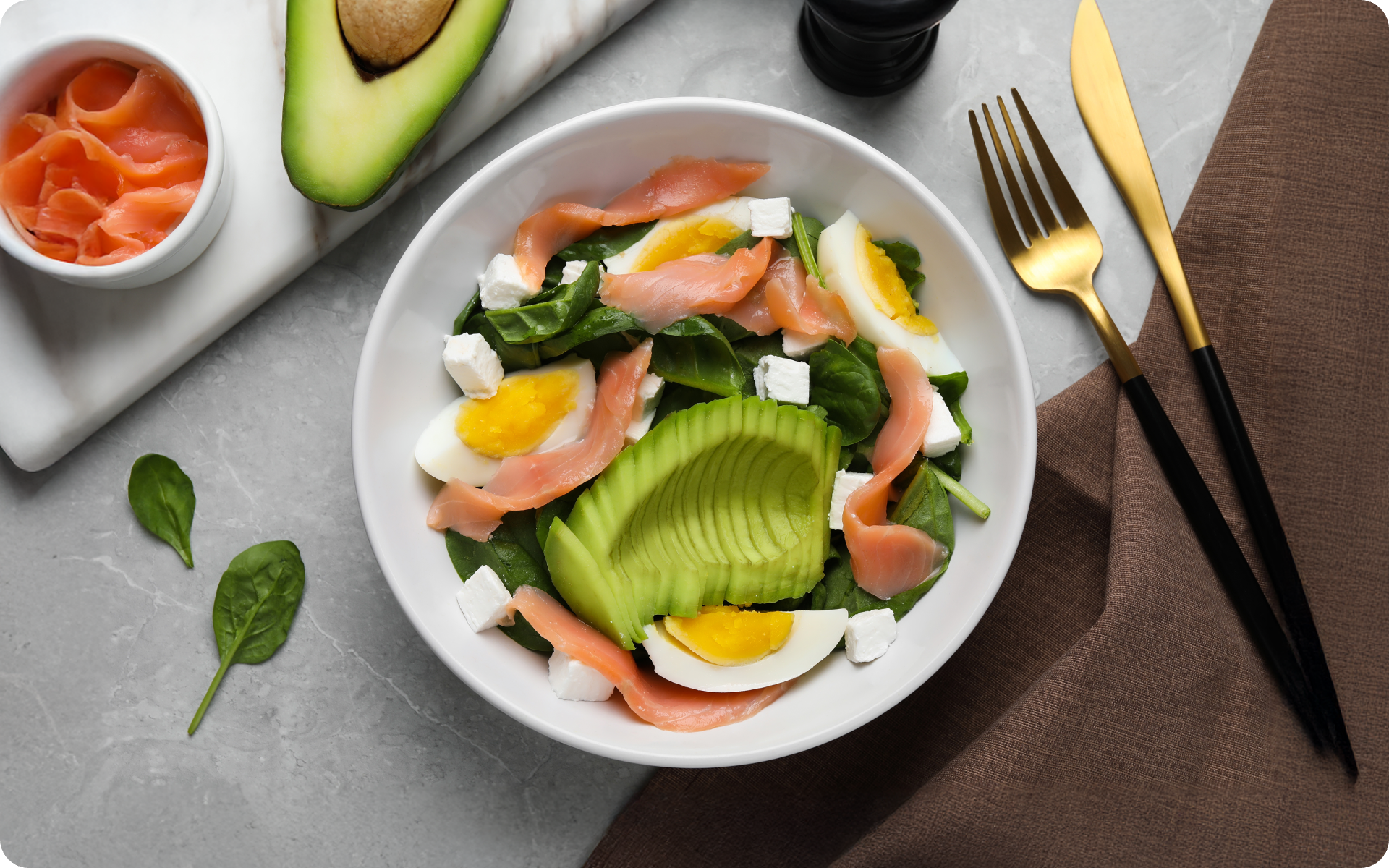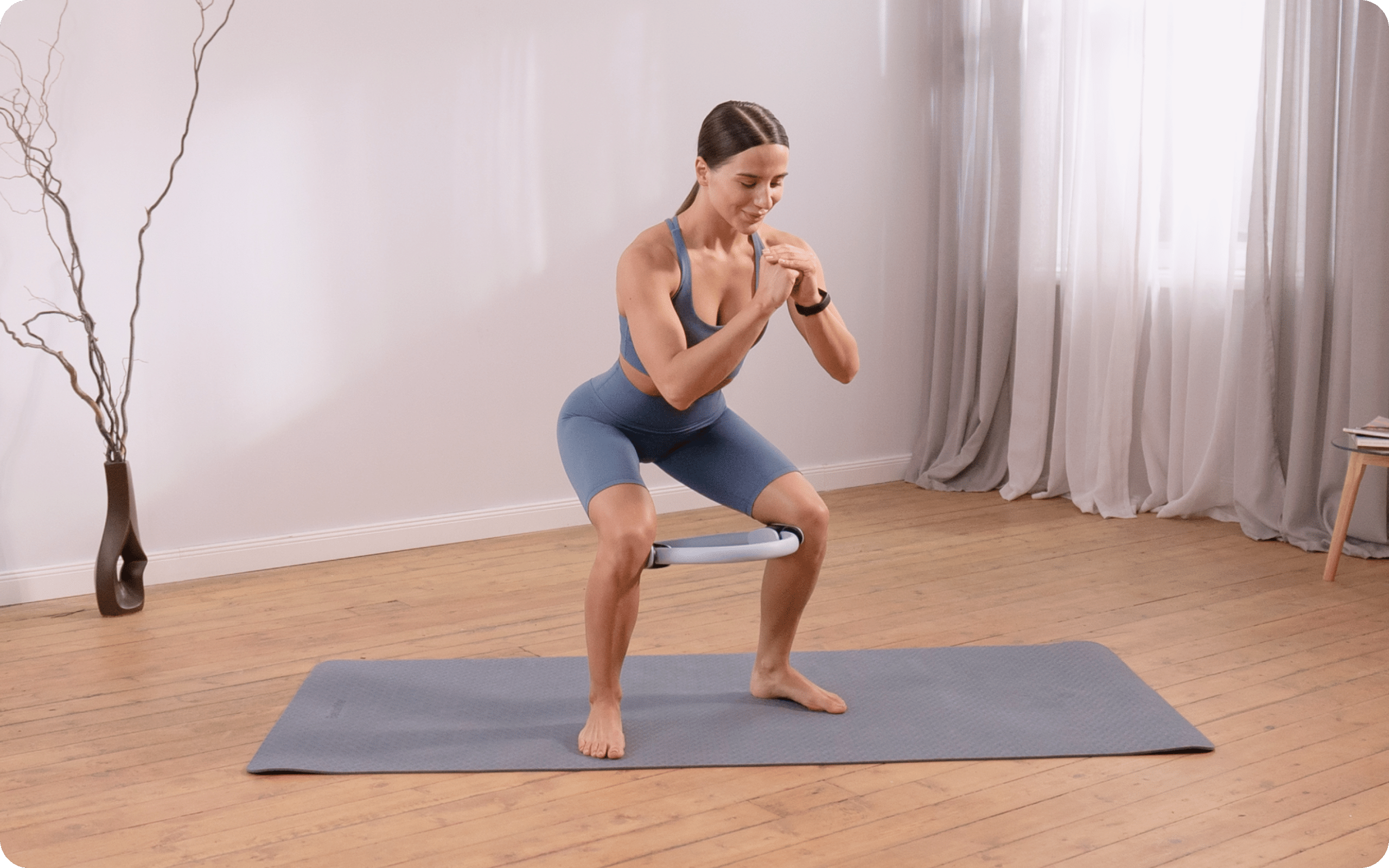How long does it take to lose 30 pounds? This is a question many people who are struggling with weight management may have in mind. An unhealthy lifestyle, among other factors, has made millions of people across the world overweight or obese. Sadly, excessive body fats increase the risk of certain health conditions such as cardiovascular diseases, diabetes, and some cancers. Therefore, it’s necessary to adopt healthier eating habits and use sustainable and healthy means to lose excess weight.
According to WHO statistics, the number of obese people has tripled since 1975 (16). In most cases, being overweight or obese means that you have excessive fat accumulation. An overweight adult has a body mass index (BMI) of equal to or above 25, while an obese adult has a BMI of 30 or more. Although BMI is not a perfect measure, if you’re in this range, you should consider finding a healthy way to shed the extra weight.
How Long Does it Take to Lose 30 Pounds Safely?
Losing 5 pounds can be difficult, so shedding 30 pounds requires high levels of discipline and commitment. To cut 30 pounds, you must make serious lifestyle decisions involving dieting, exercising, sleeping, and stress management. Although there are quick and drastic weight loss alternatives, it’s important to go for a plan that is safe and will boost your overall health in the process.
Is it Possible to Lose 30 Pounds in 3 Months?
Before understanding whether it’s possible to lose 30 pounds in 3 months, it’s important to note that even if it is possible to achieve this goal, it’s not a sustainable outcome. Losing 30 pounds in 3 months is an overly ambitious plan that translates to shedding approximately 10 pounds each month.
The CDC suggests a healthy weight loss pace is around 1 to 2 pounds per week, which means this goal pushes the upper limits of what’s recommended for sustainable weight loss by the CDC. Achieving such a goal would theoretically require a daily calorie deficit of approximately 1,166 calories, as 3,500 calories are believed to be roughly equivalent to one pound of fat (22).
However, it’s important to consider the implications of rapid weight loss, including (26):
- Potential Nutritional Deficiencies: Quick weight loss diets can often lead to inadequate intake of essential nutrients.
- Muscle Mass Loss: Without adequate energy and protein intake, plus strength training, weight loss can result from muscle loss, not just fat.
- Metabolic Rate Changes: Losing weight too quickly can slow down metabolism, making it more difficult to lose weight in the long run.
One of the key strategies to lose 30 pounds is to start with a 30-day diet plan for weight loss. This effectively requires a balanced approach focusing on:
- Consuming Whole Foods: Emphasize fruits, vegetables, lean proteins, healthy fats, and whole grains.
- Integrating Regular Exercise: Combine cardio with strength training to maximize fat loss while preserving muscle mass.
- Adequate Hydration: Water supports metabolic processes and helps manage appetite.
- Getting Sufficient Sleep: Poor sleep can hinder weight loss efforts by affecting hunger hormones and decision-making (23).
Is 30 Pounds of Weight Loss Noticeable?
A weight reduction of 30 pounds is not only noticeable but also significant in terms of both appearance and possible health benefits. The extent to which it is noticeable depends on various factors, including a person’s starting weight and how they carry their weight. Typically, losing 30 pounds can result in:
Visible Changes in Body Composition: Your clothes fit differently, and your body contours become more apparent.
Facial Slimming: Weight loss often shows in the face, making your features more defined.
Health Improvements: Significant weight loss can lead to lower blood pressure, improved cholesterol levels, and better glucose control.
The health benefits associated with losing 30 pounds or an otherwise significant amount of excess weight have been well-documented in scientific literature and include outcomes such as improved cardiovascular health and a lower risk of type 2 diabetes (24).
Furthermore, beyond physical health, losing weight can have a profound impact on an individual’s mental health and overall quality of life, including improvements in mood, self-esteem, and mobility, which contributes to a more active and fulfilling life (25).
Yanking yourself back in shape has never been so easy with our game-changing fitness app! Start transforming your life with BetterMe!
Diet to Lose 30 Pounds
The first and most important step to losing weight is changing your diet. It’s easier to improve your eating habits than it is to burn the extra by working out or leading an active lifestyle, although doing both is ideal. Eat consciously by consuming more of what is good for your body.
Eat a Healthy and Balanced Diet and Reduce Calorie Intake
As you need a calorie deficit to lose weight, you must consume less than your body needs to burn in a day. Some of the evidence-backed methods to do this are listed below:
- Understanding Calorie Deficit for Weight Loss:
- You must consume fewer calories than your body burns daily.
- Limit ultra-processed foods (e.g., fast food, French fries, cookies, instant noodles, crackers) due to their high calories and low nutrient content.
- Opt for Nutrient-Rich, Low-Calorie Meals:
- Choose vegetables, fruits, whole grains, legumes, lean meats, and healthy fats.
- These foods keep you satisfied between meals and reduce your overall calorie intake.
- Caloric Intake Recommendations:
- Don’t drastically reduce calorie intake as this can slow metabolic rate and hinder weight loss.
- For effective weight loss, reduce your daily intake by 500-700 calories to lose 1-2 pounds per week. (12)
- Determining Daily Energy Requirements:
- Use an online calorie calculator with inputs for age, sex, current weight, and activity level.
- Losing 30 Pounds for Women:
- The time frame is dependent on age and activity level.
- For example, a moderately active woman who needs 2,200 calories but consumes 1,700 may lose approximately 1 pound weekly, taking approximately 30 weeks to lose 30 pounds.
- When it Comes to Your Choice of Drinks:
- Avoid alcohol and sugary beverages (soft drinks, sweetened tea, juice) due to the high added sugar content.
- Opt for unsweetened coffee, tea, or water for healthier hydration.
Increase Protein Consumption
Protein consumption promotes weight loss. Research has suggested that a high-protein breakfast is more satisfying than a high-carbohydrate morning meal.
- One of the reasons is that it suppresses the hormone ghrelin levels, which is responsible for hunger feeling stimulation (8).
- In addition, increasing daily protein intake helps reduce calorie intake if you stay full for longer, which results in weight loss in the long term.
- High-protein foods include eggs, legumes, dairy, fish, poultry, and meat that can be included in a healthy weight loss diet.
Consumer Fiber-Rich Foods
The human body cannot digest fiber, but it slows down digestion of the other nutrients in your meal, which means fiber-rich food is a great way to fill you up without adding calories to your diet.
Let’s take a closer look at the two types of fiber:
Soluble fiber
Soluble fiber that is found in fruits and vegetables absorbs water and increases stool bulk, dragging the emptying of the stomach to make you feel full for a long time. It also stabilizes blood sugar levels and prevents crashes and spikes, which results in increased hunger.
Insoluble fiber
However, insoluble fibers are not altered during digestion. They encourage the normal movement of intestinal contents. Examples of foods rich in soluble fibers include vegetables, fruits such as apples and oranges, and legumes such as dry peas, beans, lentils, oats, and barley. Those that are rich in insoluble fibers include vegetables, fruits with edible peel or seeds, cereals, brown rice, and whole-grain products such as whole-wheat bread and pasta.
Why is fiber good for you?
In a study conducted on 252 women, it was established that raising dietary fiber minimized the risk of gaining weight and fat in women (14). In this research, 1 gram of fiber consumed led to 0.25 kg of weight loss and a quarter of a percent less body fat over 20 months. The American Heart Association Eating Plan recommends the consumption of 25 to 30 grams of fiber on average per day (15).
This finding was independent of many potential confounders, such as exercising and dietary fat intake. It appears that the impact of fiber occurs mainly through reducing energy intake over time.
Read more: How To Lose Hip Fat and Keep It Off for Good
Drinking Plenty of Water
Another factor that determines how long to lose 30 pounds is water intake. Research has established that drinking 500 ml of water before meals reduces calorie intake (20). How long it takes to lose 30 pounds with lemon water depends on overall diet and physical activity level, as well as other factors (7).
Other dietary changes to consider
- Instead of saturated fats, consume more unsaturated fats such as those in fish, and plant oils such as olive oil, avocado, sesame, and flaxseed.
- Processed and high-fat meats such as sausages should be replaced with lean alternatives such as turkey or chicken breast and sirloin.
- It’s also important to control your portion sizes by dividing your plate into three parts:
– ½ plate should be filled with fruits and vegetables
– ¼ with protein
– ¼ with whole grains.
What Exercises Should I Do to Lose 30 Pounds?
Working out will help you get rid of unwanted weight or help you maintain your ideal weight. It’s important to set realistic workout goals. Start slowly, then gradually increase the intensity and frequency of the exercises as you progress.
Resistance Training
This type of workout uses resistance to work your muscles and build strength and endurance. It enhances physical performance, functional independence, walking speed, movement control, and cognitive abilities, among other benefits. Resistance training increases lean body mass and boosts the number of calories the body burns while at rest, leading to effective weight loss in the long term.
According to one study, 10 weeks of resistance training may increase lean weight by 1.4 kilograms and reduce fat weight by 1.8 kilograms, in addition to increasing resting metabolic rate by 7% (9). Resistance training activities include lifting free weights, push-ups, crunches, squats, planks, and using weight machines.
Guide to Doing Basic Weight-Training Exercises
Always start by warming up for five minutes with light aerobics.
- Dumbbell squat and press is done by holding the dumbbells at chest height with an overhand grip. In this position, drop into a squat, and when your thighs are parallel to the floor, pause for a second, then press back up to the starting position, raising the weight above your head.
- Proper weight training exercises are performed as a circuit. Complete a set of 10-12 repetitions of each movement before resting for 1 minute. Repeat the sequence 1-2 times for a total of 2-3 circuits, then reverse the order in which the exercise is done.
- Basic push-ups are done by supporting the body with your feet and hands. Place your hands slightly wider than the shoulder-width apart, with your palms flat on the floor. Without locking your elbows, straighten your arms, then lower your torso until your chest is just above the floor. Push back to the starting position and repeat.
Cardio Exercises
Aerobics or cardio workouts increase the heart rate, which leads to burning extra calories. To lose 30 pounds, aerobics is a must. Take 20-40 minutes daily to do aerobics. These exercises include cycling, jogging, walking, hiking, swimming, and boxing.
Research has suggested that aerobics alone (without a change in diet) can result in significant weight loss (3). It has been found that doing cardio 5 times a week can result in a weight loss of up to 11.5 pounds in 10 months. Therefore, if you’re wondering how long it takes to naturally lose 30 pounds by exercising without dieting, the answer is approximately 26 months, but this can vary widely for different individuals.
How to Do Basic Aerobics
Mountain climbers
Start in a plank position, then bring your leg forward so your knee faces your arms. Move the leg back and bring the other forward, then repeat.
Burpees
Stand straight with your hands on your sides. Speedily squat, placing your hands on the ground. Push your legs out into plank posture with the weight on your arms. Do a push-up, jump back into a squat, and then return to the standing position.
Skipping Rope
When skipping, stand with your feet apart. Hold the skipping rope handles in each hand, then using the flick of the wrist, fling the rope over your head and under your feet. Jump over the rope as it comes toward your feet.
High-Intensity Interval Training (HIIT)
This physical activity entails alternating between bursts of intense workouts and moments of rest. By doing so, you’ll keep your heart rate high. This type of exercise is believed to burn more calories than others, such as aerobics and resistance training (4).
How to Do HIIT
To start, alternate between 20-25 seconds of HIIT, such as high jumps, jumping rope, or burpees, followed by 30-40 minutes of rest.
Always consult a certified personal trainer before you undertake any exercise.
If you wish to cinch your waist, tone up your bat wings, blast away the muffin top – our fitness app was created to cater to all your needs! BetterMe won’t give excess weight a chance!
Other Healthy Lifestyle Habits
In addition to dieting and working out to lose 30 pounds, you should also practice these healthy habits:
- Eat slowly as research has shown that doing so will minimize calorie intake and meal size, contributing to weight loss. A meal should last at least 15-20 minutes.
- Avoid fad diets as they encourage unhealthy eating habits. They are extremely restrictive, which causes cravings and overeating.
- Adequate sleep and reduced stress levels are recommended for weight loss. This is because sleep deprivation and stress can result in weight gain from emotional and binge eating.
- Monitor your food intake if it helps you control your portions. Monitoring your food consumption will help you track your progress and identify areas that need improvements.
- Plan your weight loss journey. You can get an accountability partner to motivate you. This can be a professional or a friend who will ensure that you follow the plan.
- Stay positive and bounce back every time you stray from the healthy routine.
- Use a nutrition-tracking app that will help monitor your calories.
- Take pictures of the progress made. This will encourage you to see that you’re a step closer to your desired weight.
- Take part in healthy weight-loss challenges. Some of these challenges encourage specific diets such as keto, paleo, and Mediterranean. Make sure you go for healthy eating diets that aren’t overly restrictive.
- If it helps with motivation or enables you to exercise more, enroll at a gym.
When you lose a significant number of pounds, there will be visible changes. For example, you may have a thinner face or smaller waist. Later, fat will melt from stubborn regions.
Weight loss is influenced by other factors such as age, genetics, sex, and baseline activity. Therefore, it’s necessary to get a green light from your doctor before you start any weight loss routine. These experts will also help customize the perfect diet and exercise routine for you.
Read more: How to Lose Weight After 50: Discover 23 Ways to Lose the “Dad Bod” or Menopause Belly After 50
FAQs
How many calories do I need to burn to lose a pound?
3,500 calories are equivalent to approximately one pound of body fat, so to lose one pound, you theoretically need to burn approximately 3,500 calories (6). However, in real life, weight loss is much more complicated than a simple math equation.
How long will it take to lose 30 pounds on a keto diet?
A keto diet is a high-fat, low-carb diet. The period differs. Some reviews suggest that you can lose about 10 pounds in 3 weeks, meaning that it may take about 9 weeks to lose 30 pounds while following a ketogenic diet (13). Others claim to have lost 30 pounds a month by following this eating plan. However, a more sustainable pace of weight loss is 1-2 pounds per week, regardless of the diet you’re following. If you lose weight at a slower pace, you’ll be less likely to gain it back later.
How long will it take to lose 30 pounds on a fast?
An extreme fast may cause you to lose 0.5 pounds a day. It should be noted that this is an extreme way of losing weight, highly unhealthy, and dangerous. Most of the weight you lose when fasting is probably water, which will return when you start eating again.
What is healthy weight loss per week?
Health professionals recommend losing 1-2 pounds weekly (21). Therefore, the perfect answer to how long it takes to lose 30 pounds safely is a minimum of 15 weeks to approximately 30 weeks. To maximize the outcomes and enjoy long-term success, you must combine dieting with workouts and other healthy lifestyle habits.
How long it takes to lose 30 pounds will be determined by the healthy lifestyle you follow. A combination of dieting, workouts, minimal stress, and enough rest, among others, will help you realize this sustainable weight loss goal in approximately 30 weeks or less. The most important thing is to be committed and consistent with healthy eating and make healthy lifestyle choices.
The Bottom Line
Our article on ‘How long to lose 30 pounds’ offers a comprehensive examination of the weight loss journey, underscoring the fact that while rapid weight loss is possible, it’s not a sustainable or healthy long-term strategy. It emphasizes the importance of adopting sustainable habits and making significant lifestyle changes to ensure gradual and consistent weight loss.
Key points include the necessity of a balanced diet that is rich in nutrients, regular physical activity tailored to individual capabilities, and ensuring adequate sleep and hydration. It’s always advisable to set realistic goals and incorporate these habits into your daily life, rather than focusing on quick fixes. It also highlights the psychological aspect of weight loss, advocating for a positive mindset and self-compassion throughout the journey. By adopting these practices, you can aim for a healthier, more sustainable weight loss path, rather than fixating on rapid results that are difficult to maintain over time.
DISCLAIMER:
This article is intended for general informational purposes only and does not serve to address individual circumstances. It is not a substitute for professional advice or help and should not be relied on for making any kind of decision-making. Any action taken as a direct or indirect result of the information in this article is entirely at your own risk and is your sole responsibility.
BetterMe, its content staff, and its medical advisors accept no responsibility for inaccuracies, errors, misstatements, inconsistencies, or omissions and specifically disclaim any liability, loss or risk, personal, professional or otherwise, which may be incurred as a consequence, directly or indirectly, of the use and/or application of any content.
You should always seek the advice of your physician or other qualified health provider with any questions you may have regarding a medical condition or your specific situation. Never disregard professional medical advice or delay seeking it because of BetterMe content. If you suspect or think you may have a medical emergency, call your doctor.
SOURCES:
- 9 Women Share Exactly How Long it Took Them to Lose 20 Pounds or More (2016, womenshealthmag.com)
- 15 Easy Aerobic Exercises to Lose Weight and Get Back in Shape (2019, parenting.firstcry.com)
- Aerobic exercise alone results in clinically significant weight loss for men and women: Midwest Exercise Trial-2 (2013, ncbi.nlm.nih.gov)
- Caloric expenditure of aerobic, resistance, or combined high-intensity interval training using a hydraulic resistance system in healthy men (2015, pubmed.ncbi.nlm.nih.gov)
- CLINICAL GUIDELINES ON THE IDENTIFICATION , EVALUATION , AND TREATMENT OF OVERWEIGHT AND OBESITY IN ADULTS (1998, nhlbi.nih.gov)
- Counting calories: Get back to weight-loss basics (2020, mayoclinic.org)
- Does Lemon Water Help You Lose Weight? (2017, healthline.com)
- Effect of a high-protein breakfast on the postprandial ghrelin response (2006, pubmed.ncbi.nlm.nih.gov)
- Effect of resistance training on resting metabolic rate and its estimation by a dual-energy X-ray absorptiometry metabolic map (2014, pubmed.ncbi.nlm.nih.gov)
- How Long Should It Take to Lose Thirty Pounds? (livestrong.com)
- How to Lose 30 Pounds Safely (2020, healthline.com)
- How Much Weight Can You Lose a Week on a 1,200-Calorie Diet? (2019, livestrong.com)
- .I Tried the Ketogenic Diet for 30 Days and Here’s What Happened (2020, eatingwell.com)
- Increasing total fiber intake reduces risk of weight and fat gains in women (2009, pubmed.ncbi.nlm.nih.gov)
- Increasing Fiber Intake (n.d, ucsfhealth.org)
- Obesity and overweight (2020, who.int)
- Resistance training is medicine: effects of strength training on health (2012,pubmed.ncbi.nlm.nih.gov)
- This Guy Lost 30 Pounds In 3 Months By Following These Simple Tips (2020, menshealth.com)
- This Is How 15 Real People Lost 30 Pounds (2020, eatthis.com)
- Water consumption reduces energy intake at a breakfast meal in obese older adults (2008, pubmed.ncbi.nlm.nih.gov)
- What is healthy weight loss? (2020,cdc.gov)
- Weight Loss (n.d., cdc.gov)
- Weight Loss in a Sustainable Way ( 2024, healthline.com)
- Weight Loss: Psychological benefits (2014, sciencedirect.com)
- What Happens When You Lose A Lot of Weight? (2023, webmd.com)
- Why is it bad to lose weight too quickly (2023, healthline.com)
















